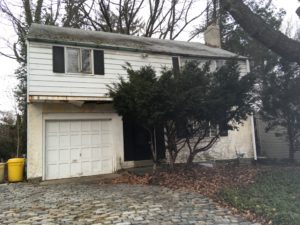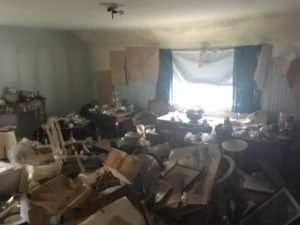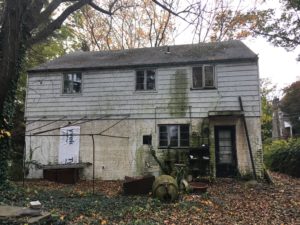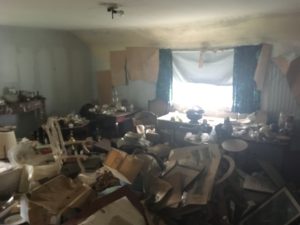Taking on this project was a huge leap of faith for me. Doing a renovation of this scale (the amount of $, the level of renovation, the time and details required) was a first for me, but I knew that in the end it would be worth it. As I’ve shared, we were on the hunt for a house for a LONG time and we were OK with waiting. To recap, the first time I made contact with the owner was in the fall of 2016. Giselle’s friend lived nearby and my eyes were immediately drawn to how awful it looked. “Could this finally be the ugliest house on the block that I’ve been praying for?” I have no doubt that Jesus took the wheel (I love that term because it’s so true… I generally believe we have control over certain things but at the end of the day, I’m just working God’s plan for me)
At the end of the day, I’m grateful for the growth that I experienced throughout this journey. My process wasn’t perfect and I made some mistakes (expensive ones too!)- which I’ll share- but my goal at every “bump in the road” was to move forward.
One of my intentions for this project was to document and share the progress because a) I wanted to have this process together for future projects and b) I envisioned the transformation to be seamless! When B didn’t happen the way I envisioned, I was hesitant to share because I was mad at myself for making stupid mistakes. The reality is, sharing my mistakes may help others avoid them (and my goal this year is to impact the lives of 100 people) so I need to get over myself and just do it.
So I can’t do this all in 1 post, but I will highlight different stages- share what worked for me, what didn’t, how I moved forward and what I learned.
First thing I’ll share is my experience working with an architect. This needs to be shared since I learned a lot from this process because apparently I was not aware of this important distinction. Architect does not = designer. This isn’t the case for everyone, but the sole job of an architect is to build a house based on codes that need to be adhered to. Every architect needs to create plans for houses that adhere to a code, but design is not an element of every architect that should be assumed. So in essence you need to be really specific with your vision or provide a similar model/plan to work off of, in order to achieve the design that you have in mind.
After we hired our architect and as we were going through the process to get the plans finalized- and even while we were in the trenches of the renovation after plans were approved- there were a lot of things that I assumed would have been considered based on the incorrect assumption that architects provide design- the pitch of a roof, the placement of lighting, the flow of a room, the ideal space for rooms, bathrooms, etc. exact placement of windows and doors (the height from which the windows should be from the floor, for example) turning radius to get furniture in/out of the house. My assumption was that these things were considered in creating the floorplans and design of the house. It was only after we were in the thick of working with the architect did we how much double and triple checking we needed to do. There are firms that provide this component, but when selecting your architect, be clear with your expectations on what should be provided and have it in writing. I didn’t know what to compare and honestly (as stupid as this sounds) I didn’t interview a lot of people because it was someone I knew. In the end, I am at peace with the choices I made. We spent a long time finalizing plans for various reasons, but I think the main one was that I expected much less back and forth because I expected more knowledge of design from the architect. Next time, I know that I will need to be really specific with expectations or expect to pay more money and factor that expense in at the purchase.
And to make clear, this isn’t a post to bash the architect I worked with because there is a possibility I would still work with them and there’s responsibility in my actions as well. My intention is to share what my expectations/assumptions were, how they were incorrect- and what I learned from that process so that I can avoid the same mistakes when I’m selecting an architect in the future.






